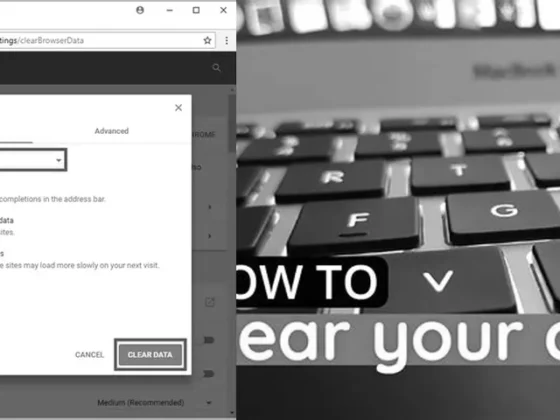Why Does Google Sheets Change My Date Format: Are you tired of Google Sheets changing your date format without your consent? It can be frustrating when you input a specific date format, only to have Google Sheets automatically change it to something else. But fear not, because in this blog post, we will dive deep into the reasons behind Google Sheets’ automatic date format change and provide you with practical solutions to prevent it. So, if you’re ready to take control of your date formats and avoid any more formatting mishaps, keep reading!
Understanding Google Sheets’ Automatic Date Format Change
Google Sheets is a versatile tool that serves a multitude of functions, from simple arithmetic operations to complex data analysis. However, users frequently encounter a common issue: Google Sheets changes the date format automatically. This can cause confusion and disrupt workflows, especially when the data does not appear as intended.
Preventing Auto-Formatting of Dates in Google Sheets
To maintain control over your data representation, it’s essential to know how to stop Google Sheets from auto-formatting dates. The simplest method is to pre-format the cells to Plain Text. This can be done by selecting the cells you wish to format, navigating to the menu bar, clicking on Format, then Number, and finally selecting Plain Text. This action tells Google Sheets to treat the input as plain text and not to apply any date formatting rules.
Step by Step to Pre-Format Cells
- Select the cells where you’ll input dates.
- Go to the Format option in the toolbar.
- Hover over Number to expand the submenu.
- Click on Plain Text to apply the format.
Applying a Custom Date or Time Format
If you wish to keep the date format consistent in Google Sheets, you have the option to apply a custom date or time format. This is particularly useful for maintaining a uniform appearance across datasets and ensuring that the data is displayed according to your preferences or regional standards.
Creating Custom Date and Time Formats
To create a custom format, highlight the desired cells, then select Format from the toolbar. Navigate to Number, then to More formats, and choose More time and date formats. From here, you can craft a format that suits your specific needs, whether that’s the order of day, month, and year, or the inclusion of time elements.
Fixing Incorrect Date Formats by Changing Locale
Another common reason for unexpected date formatting is the spreadsheet’s locale settings. The locale influences how dates, times, currencies, and other data types are displayed. To fix an incorrect date format that doesn’t match your regional settings, you can change the locale through the “Spreadsheet settings” option. Here’s how:
Changing Spreadsheet Locale
- Open your Google Sheets document.
- Select File from the top menu.
- Choose Spreadsheet settings from the dropdown.
- Find the locale option and choose the appropriate region.
- Click Save settings to apply your changes.
- Reopen Google Sheets to see the updated format.
Ensuring Date Formats Stay Consistent in Excel
While Google Sheets is widely used, many users also work with Microsoft Excel, which has similar issues with date auto-formatting. To prevent Excel from converting your data into dates, preformat the cells as Text before entering any data. This can be done by selecting the cells, right-clicking to get the context menu, and choosing the Format Cells option, then selecting Text under the Number tab.
Quick Tip to Avoid Automatic Date Formatting in Excel
If you’re entering data and notice Excel is changing your input into dates, you can quickly circumvent this by starting your entry with a space. This tells Excel to treat the entry as text, preserving the format you intended.
Why Date Formatting Matters
Date formatting is not just a matter of personal preference; it has practical implications. For instance, in data analysis, incorrect date formats can lead to misinterpretation of data, which in turn may result in flawed decisions or analysis. Moreover, in a globalized environment, collaborating with individuals across different regions requires a clear and consistent date format to avoid confusion.
By understanding how to control date formats in Google Sheets and Excel, you can ensure that your data is accurate, clear, and communicates the intended message. Remember, the key to effective data management is consistency and clarity, and properly formatted dates play a crucial role in achieving this.
Final Thoughts
Date formatting issues can be a nuisance, but with the right knowledge, they are easily managed. By taking advantage of the formatting options and settings within Google Sheets and Excel, you can ensure that your spreadsheets accurately represent your data without unwanted changes. It’s about gaining control over your tools and using them to present your information in the most effective way possible.
Whether you’re a seasoned data analyst or just starting to explore the capabilities of spreadsheet software, these tips will help you maintain the integrity of your data and streamline your workflow, saving you time and frustration in the process. So next time you find your dates getting scrambled, you’ll know exactly what to do to keep your data on track.
FAQ & Related Questions about Why Does Google Sheets Change My Date Format?
Q: Why does Google Sheets change my date format?
A: Google Sheets automatically changes the date format based on the default locale of your spreadsheet.
Q: How do I stop Google Sheets from auto formatting dates?
A: To prevent Google Sheets from auto formatting dates, you can pre-format the cells to Plain Text by selecting Format > Number > Plain Text.
Q: How do I fix the wrong date format in Google Sheets?
A: To fix the wrong date format in Google Sheets, you can change the locale through the “Spreadsheet settings” option. Open Google Sheets, select File, choose “Spreadsheet settings,” change the locale, and save your settings.
Q: How do I get Google Sheets to recognize dates?
A: To get Google Sheets to recognize dates, you need to set the default locale of your spreadsheet. Go to File > Settings, select the General tab, and set your region under Locale. This will ensure that the date and time formats are as per your preference.
Q: How can I keep the date format in Google Sheets?
A: To keep the date format in Google Sheets, you can apply a custom date or time format to the spreadsheet. Select the “Format” option from the toolbar, navigate to “Number,” “More formats,” and “More,” and choose the desired date format.


